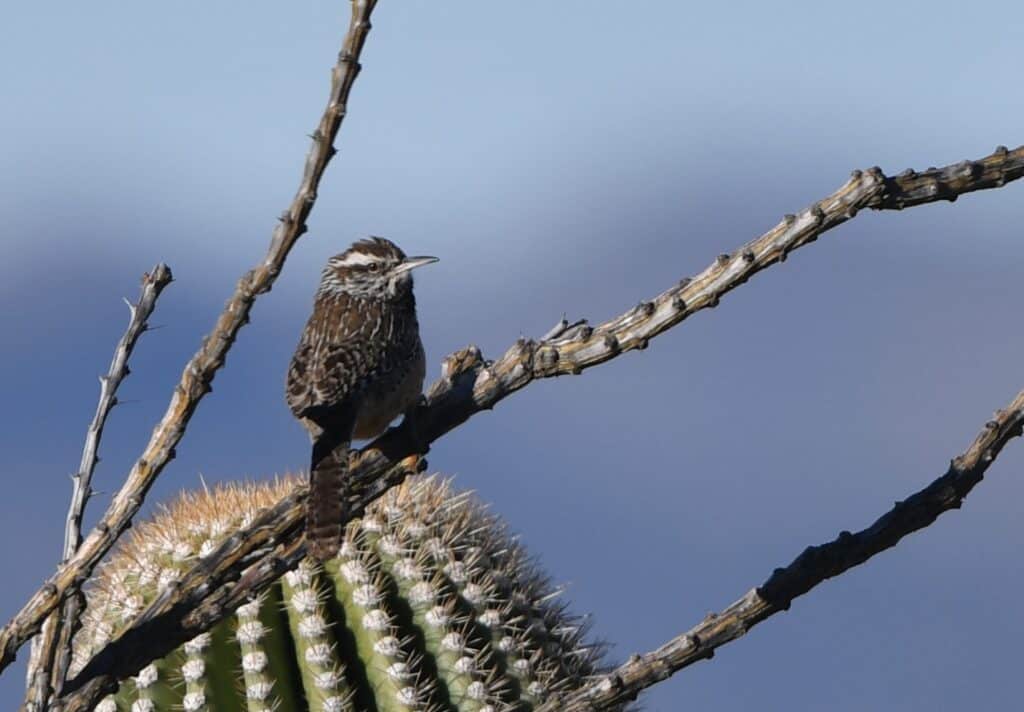Bird movement doesn’t always help mitigate warming conditions
As climate change continues to accelerate, birds are moving north or up mountains. But this may not actually help them avoid the challenges of warming conditions.
“It’s often assumed that highly mobile species such as birds can just relocate and escape the consequences of climate change, and while a number of studies have indeed shown them moving north or to higher elevation, none have considered whether these relocations actually help species avoid warming,” said Jeremy Cohen, an associate research scientist in Yale University’s Department of Ecology and Evolutionary Biology.
Cohen led a study published in Nature Ecology and Evolution looking to answer this question for birds in North America.
For thousands of years, birds have been adapting to gradually shifting temperature, rainfall and humidity conditions. But now climate change is occurring much more rapidly. For example, in North America, in just 50 years, temperatures have increased by several degrees Celsius.
While many species can’t adapt to these quick changes, some scientists believe that birds have an advantage. “If you’re a species that is able to move quickly, you could potentially head north or up mountains to cooler climates that more closely match what you’ve historically adapted to and avoid overheating,” Cohen said.
Birds are also an ideal research subject for scientists, as they are relatively easy to observe by citizen science projects. In fact, observational data is 10 times more abundant for birds than it is for mammals, insects, or amphibians in the U.S., Cohen said.

Cohen and his colleagues used some of this citizen science as well as other observational data collected by researchers over 20 years to measure where birds spent their time and how the environmental conditions they experienced changed over time.
The team gathered data from the Global Biodiversity Information Facility (GBIF), a global data repository that includes data from citizen science initiatives, museum collections, structured research surveys and more.
Using statistical models, the researchers determined how over 400 North American bird species shifted their locations between 2000 and 2020 during the summer and the winter. The team also looked at whether birds experienced new environmental conditions like temperature, precipitation and plant productivity during this time.
Cohen and his colleagues found that birds did move northward during both seasons over the study period. “However, for most species, this wasn’t enough to avoid the consequences of climate change,” he said.
On average, the 400 species were able to reduce summer warming by about 52% of what they would have experienced had they stayed put. But in the winter, they could only reduce it by about 11%. “Species avoided increasing temperatures much more successfully in summer than winter,” Cohen said. During the summer, Cohen said increasing heat can be more threatening than during the winter, when most birds can tolerate an increase in temperature from typically cool weather. “This just shows how important it is to consider the responses of wildlife to climate change across different parts of the year,” he said.

Birds’ success with mitigating their exposure to climate change also depends on the species. Birds like the blue-winged warbler (Vermivora cyanoptera) were able to move far north and avoid warming in the summer, while Nashville warblers (Leiothlypis ruficapilla) moved only a little and avoided almost no warming. In the winter, cactus wrens (Campylorhynchus brunneicapillus) didn’t move much and faced warming of 5 degrees Celsius, as southwestern deserts in the US are experiencing much milder winters than they did historically.
“Overall, species that tend to migrate far and have a wing shape with proportions meant for long-distance flight were the best at relocating over the 20 years and thus reducing their exposure to climate change,” Cohen said.
Cohen said these findings have implications for all wildlife that continue to face a warming climate. “If birds are unable to move fast enough to keep up, it’s going to be impossible for most mammals, reptiles, amphibians, insects, other invertebrates and plants,” he said. “These groups are either going to have to adapt and become more flexible in their tolerance of hot conditions or find a way to buffer themselves from the weather, for example, by spending more time underground or breeding earlier in the spring.”






